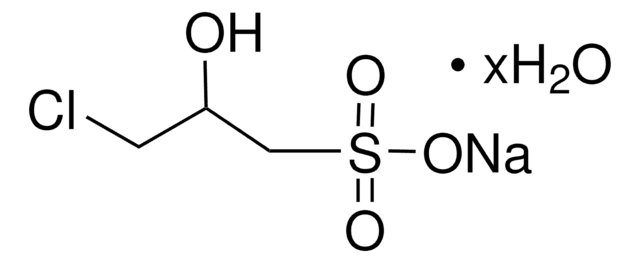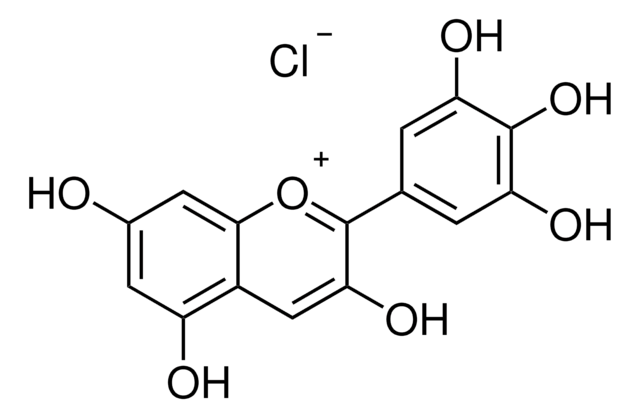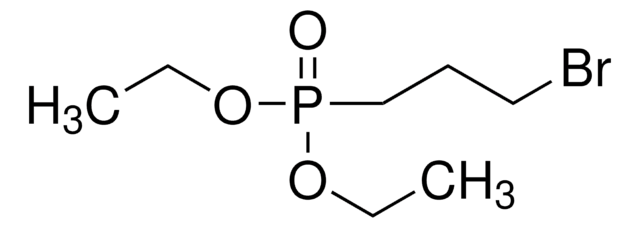137502
Sodium 2-bromoethanesulfonate
98%
Synonym(s):
2-Bromoethanesulfonic acid sodium salt
Sign Into View Organizational & Contract Pricing
All Photos(1)
About This Item
Linear Formula:
BrCH2CH2SO3Na
CAS Number:
Molecular Weight:
211.01
Beilstein:
4590828
EC Number:
MDL number:
UNSPSC Code:
12352100
PubChem Substance ID:
NACRES:
NA.22
Recommended Products
Quality Level
Assay
98%
mp
283 °C (dec.) (lit.)
solubility
water: soluble 100 mg/mL, clear, colorless
functional group
bromo
sulfonic acid
SMILES string
[Na+].[O-]S(=O)(=O)CCBr
InChI
1S/C2H5BrO3S.Na/c3-1-2-7(4,5)6;/h1-2H2,(H,4,5,6);/q;+1/p-1
InChI key
HNFOAHXBHLWKNF-UHFFFAOYSA-M
Looking for similar products? Visit Product Comparison Guide
Related Categories
General description
Sodium 2-bromoethanesulfonate acts as methanogenesis inhibitor during anaerobic digestion. It reacts with lithium sulfinated polysulfones(PSU) to yield sulfoethylated PSU.
Application
Sodium 2-bromoethanesulfonate(BES) was used to investigate the effect of BES on inhibition of bacterial growth.
Storage Class Code
13 - Non Combustible Solids
WGK
WGK 1
Flash Point(F)
Not applicable
Flash Point(C)
Not applicable
Personal Protective Equipment
dust mask type N95 (US), Eyeshields, Gloves
Choose from one of the most recent versions:
Already Own This Product?
Find documentation for the products that you have recently purchased in the Document Library.
Customers Also Viewed
Yu Yang et al.
Water research, 47(17), 6790-6800 (2013-10-12)
Nano zero valent iron (NZVI), although being increasingly used for environmental remediation, has potential negative impact on methanogenesis in anaerobic digestion. In this study, NZVI (average size = 55 ± 11 nm) showed inhibition of methanogenesis due to its disruption
J Sipma et al.
Applied microbiology and biotechnology, 64(3), 421-428 (2003-10-14)
The conversion routes of carbon monoxide (CO) at 55 degrees C by full-scale grown anaerobic sludges treating paper mill and distillery wastewater were elucidated. Inhibition experiments with 2-bromoethanesulfonate (BES) and vancomycin showed that CO conversion was performed by a hydrogenogenic
Oleg R Kotsyurbenko et al.
Environmental microbiology, 6(11), 1159-1173 (2004-10-14)
Sites in the West Siberian peat bog 'Bakchar' were acidic (pH 4.2-4.8), low in nutrients, and emitted CH4 at rates of 0.2-1.5 mmol m(-2) h(-1). The vertical profile of delta13CH4 and delta13CO2 dissolved in the porewater indicated increasing isotope fractionation
Kewei Xu et al.
Applied microbiology and biotechnology, 87(6), 2267-2279 (2010-06-19)
The effects of two typical methanogenic inhibitors [2-bromoethanesulfonate (BES) and chloroform (CHCl(3))] on the bacterial populations were investigated using molecular ecological techniques. Terminal restriction fragment length polymorphism analyses (T-RFLP) in combination with clone library showed that both the toxicants not
Tao Yan et al.
FEMS microbiology ecology, 55(2), 248-261 (2006-01-20)
Anaerobic cultures capable of reductively dechlorinating 2,3,4,5-tetrachlorobiphenyl (CB) were enriched from three different sediments, one estuarine, one marine and one riverine. Two different electron donors were used in enrichments with the estuarine sediment (elemental iron or a mixture of fatty
Our team of scientists has experience in all areas of research including Life Science, Material Science, Chemical Synthesis, Chromatography, Analytical and many others.
Contact Technical Service







